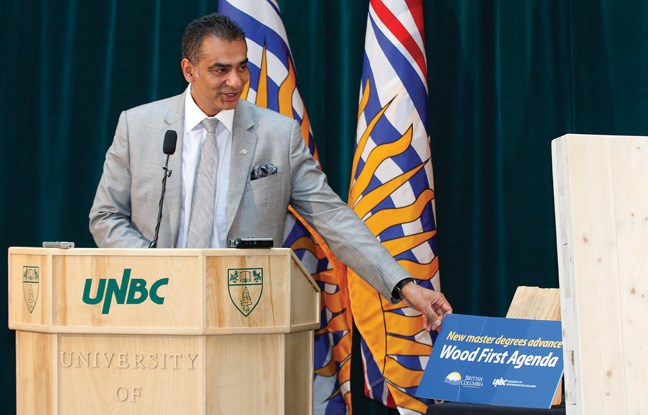 Balancing a budget is one thing, for which credit was bestowed in this space on Wednesday.
Balancing a budget is one thing, for which credit was bestowed in this space on Wednesday.
Maintaining the impression that the government is doing everything that needs doing while staying in the black is another.
That’s the task that detailed service plans for every ministry try to accomplish. They were released along with the budget, and they are generally mystifying.
The typical one is two or three dozen pages explaining what each ministry does and how much more needs to be done. They’re generally warm, enthusiastic accounts from each minister about how much they are going to accomplish.
Then there’s a cold, hard resource table at the bottom that shows how much money has been allocated. With a few exceptions, they generally show flatlining revenues for the next three years.
You could sum up the hundreds of pages of documents for the most part with two words: “Make do.”
Broken down into 19 ministries or programs, eight of them are expected to operate for three years on the same amount of money as they got this year. Three of them decline slightly. Eight of them go up, most by marginal amounts.
The one that jumped out for most people is Advanced Education. Government isn’t the only source of revenue in that sector, but the province allocated $1.952 billion for the post-secondary ministry in the current year. In the three-year plan, it’s slated to decline to $1.911 billion by 2016-17.
In the face of all the routine pressures and the prospect of unexpected ones to come, the government is expecting to fund the sector for the next three years with slightly less money each year.
It’s such an obvious quandary that the Finance Ministry had no choice but to address the issue directly in the budget documents. It stated that as stressed when the plan was broached last year, savings are to be forced through shared services and administrative savings, with no impact on students or programs.
University presidents have all objected to that idea. But the budget says in the current fiscal year, cuts have been offset by the efficiencies. They have to keep that up for three more years.
At the same time, there’s an ambitious $2.3-billion capital spending plan in the post-secondary world. (Money for building comes from a separate account.)
Some of it is replacement and maintenance, but some builds new capacity. So they are planning to expand the overall sector, but freeze the operational funding for three years. The resource table for that ministry breaks down educational institutions, student programs and executive and support services. Exactly the same dollar figure is listed for each in the next three years.
The minister responsible, Amrik Virk, said it can be done through efficiencies. He’s expecting savings from joint procurement and eliminating the “individuality” in things like credit-card payments.
It’s the same picture in the Jobs, Tourism and Skills Training Ministry. The resource summary lists eight separate operational accounts for things such as labour-market initiatives, tourism, economic development and labour programs. The budget for this year is carried forward identically in each of the next three years.
How they expect to freeze those budgets for three years while the general emphasis on jobs and skills training grows isn’t explained.
The Environment Ministry service plan is a marvel of optimism. After stressing how much new work lies ahead, the service plan outlines a plan to do it all with a budget increase of less than one per cent over three years.
The environmental-protection budget is scheduled to go up slightly for two years, then subside to this year’s level by 2016-17. Environmental sustainability will flatline for three years. So will the Conservation Officer Service. The B.C. Parks budget will tick up, then revert back to this year’s amount, even while they’re aiming to bring one million more people into the parks.
The only part of the ministry to get a hike of any consequence is the environmental assessment office.
The service plans represent a long, grinding march, where most routine cost increases will have to be covered by money from somewhere else in the department.



